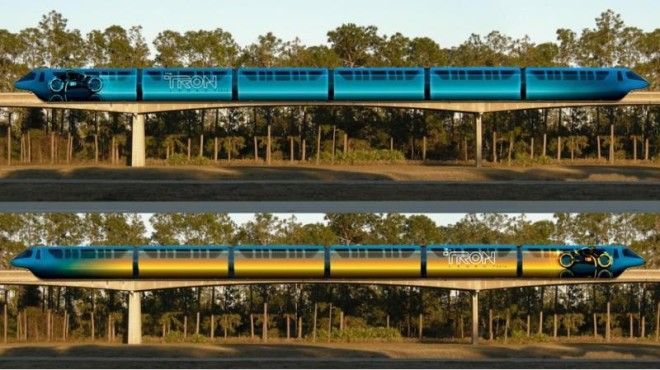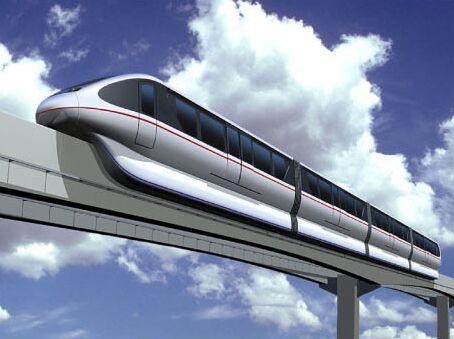Well if you are technical-sensed person you will understand that Monorail has something to do with a single rail and you’re exactly right! It is simply a ‘bogey’ or what you would call as a bus which moves on just one rail, typically elevated. These vehicles are either suspended from a straddle or a narrow guide way. It uses numerous wheels along the sides of the beam way to stabilize the tall vehicle. However, Mag-Lev technology is also being used to drive the monorails in a few cities.

Glimpse of a hanging monorail in japan – Courtesy of Feorag
Each and every day hundreds of thousands of passengers are carried on monorails. Many of the world’s transit monorails exist in Japan, eight of which are full-scale urban transit systems. Monorails also exist Australia, Malaysia, India, Europe, Russia and in the United States. Several more are either under construction or in advanced planning. The Walt Disney Monorail System near Orlando, Florida, has one of the highest ridership of all monorails where well over 100,000 passenger trips are recorded each day on the 14 miles of beam-ways. Recently, however, a number of major transit grade monorails have been either built or are in construction or planning phase. Japan is the clear leader in the construction of monorail systems.

The Tron Artwork featured monorail belonging to Walt-Disney Monorail System. Image Courtesy-Druidhills
In most cases rail is elevated, but monorails can also run at grade, below grade or in subway tunnels. They can be individual rigid vehicles, articulated single units, or multiple units coupled into trains. Almost all modern monorails are powered by electric motors fed by dual third rails, contact wires or electrified channels attached to or enclosed in their guidance beams, but diesel-powered monorail systems also exist. Historically some systems, such as the Lartigue Monorail, used steam locomotives. Modern monorails also come equipped with the tilting technology which help the train to negotiate a tight curve with ease.
It could just fairly be called the motorcycle version of a metro rail due to several reasons. For the fact that it is more economical both in operation and construction, it occupies lesser space due to its ability to travel on only a single beam or rail. The construction by itself is very simple and can be completed swiftly causing least disturbance to its surrounding. The construction of a monorail guide-way is so simple that it involves: digging a hole, droppin in a pre-built support pylon, trucking in the track which was manufactured offsite, and finally lifting it into place.
Now you might ask yourself, if monorails are really so awesome then why aren’t there more of them? An excellent question indeed! “There aren’t any transit monorails, we shouldn’t build something that hasn’t been proven.” It’s a ludicrous reason, but it sticks for some reason. This is despite the fact that there are dozens of successful transit monorails around the world.
Monorails are perceived as new, experimental and untried. Not enough people are aware of the many transit monorails in operation today along with their proven track record. But monorails have an excellent track record of safety, Eco-friendliness and reliability and I wish to see a day soon when the investors realize the pros of monorail and give them more importance.

